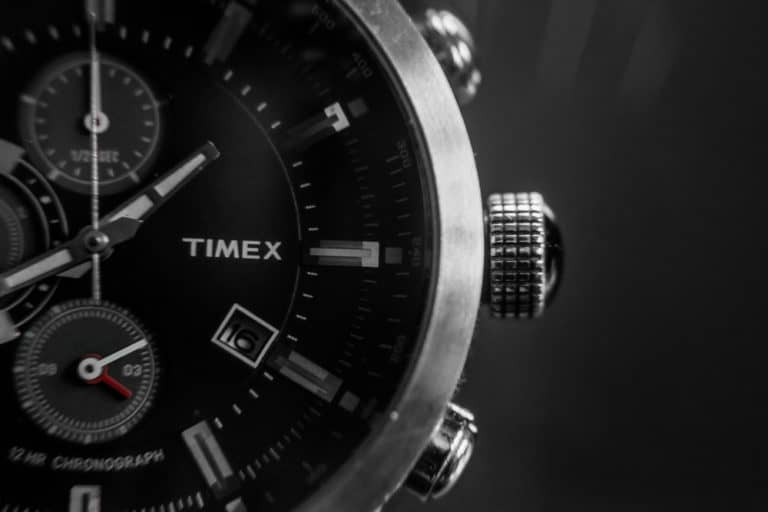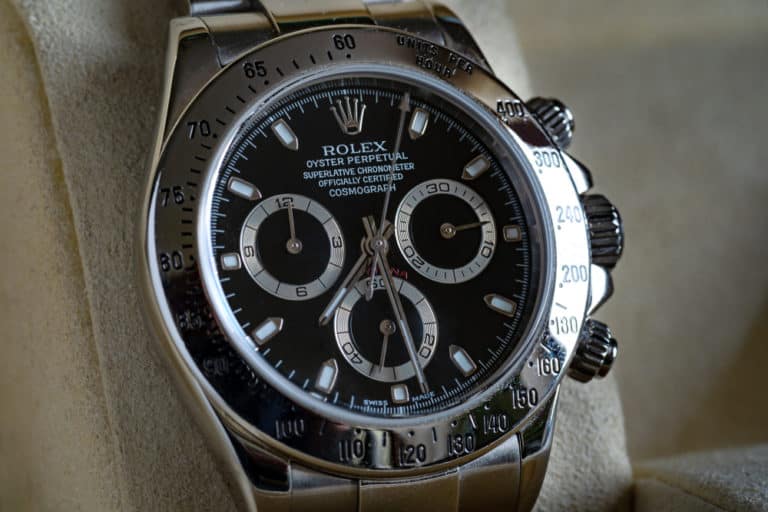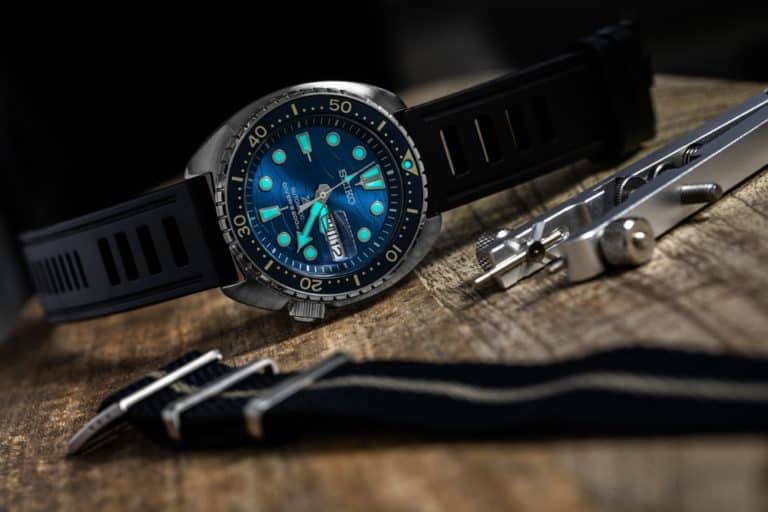Editorial credit: Evannovostro / Shutterstock.com
At every one of the 17 MotoGP races of the season, Tissot awards individually engraved watches to the pole position winners in all three classes – 125cc, 250cc, and MotoGP – a prize much sought after by riders. What then of the other watches in the Swatch stable – are they as popular? Is Rado better than Tissot?
Rado is better than Tissot when viewed objectively:
- It is a luxury brand, whereas Tissot is not
- Made from Ceramic, so is hypoallergenic and safe on the skin
- No metal is used
- Lightweight and extremely scratch-resistant
- Retains value very strongly
- Retails at far more than a Tissot
The Swatch company of Grenchen, Switzerland, is the world’s largest watch company, employing over 36 000 staff in 50 countries. It was founded in 1983 by amalgamating SSIH (Société Suisse pour l’Industrie Horlogère), and ASUAG (Allgemeine Gesellschaft der Schweizerischen Uhrenindustrie). This was done to alleviate the quartz crisis that had been threatening the watchmaking industry.
What Watches Fall Under The Swatch Umbrella?
A number of the world’s finest watch brands are now owned by Swatch:
- ETA,
- Blancpain,
- Glashütte Original,
- Harry Winston,
- Omega,
- Longines,
- Hamilton,
- Certina,
- Mido,
- Breguet,
- Rado and
- Tissot,
What Do The Rado Owners Think Of Their Watches?
“Rado has been an innovator in the watchmaking world since it was first introduced. The use of pioneering materials like Ceramic and titanium in their watches and their open attitude to high-tech has been simply revolutionary,” says one fan.
“Horologists believe that Rado watches offer extraordinary craftsmanship, breath-taking features, and elegant designs. The watches compliment both classical and contemporary fashion and even casual outfits. The prices they fetch are fully justified by the aesthetics, cutting-edge materials used, and exciting features,” adds another.
What Do The Tissot Owners Think Of Their Watches?
“Style and simplicity are the first words that come to mind when I look down at the Tissot on my wrist. Both words are precisely what I look for in a dress watch, and my Tissot has both in spades.
It is understated yet elegant and finishes off a bespoke suit as easily as it compliments a chunky sweater. Under 40mm in diameter and just over 10mm thick, my Tissot is the epitome of a luxury watch that knows how not to be ostentatious. I love it,” raves a fan in Italy.
Is Rado Better Than Tissot?
Comparing two luxury watches, particularly from the same stable, is very difficult, and one tends to find subjective rather than objective reviews and comments, but let’s see what we can unearth:
Tissot is classified by Swatch as “Middle Class,” and Rado is classified as “High Class.” This may simply be the marketing strategy they have chosen, but Tissot is certainly aimed more at the sporty consumer and Rado at the wealthy.
Cost of Rado vs. Tissot
The lower end of the Tissot range (U$120 – U$420) is generally made up of less fancy quartz watches. These maintain attractive Swiss styling and precision and boast some high-quality features like a scratch-resistant front and half-skeleton rear.
The higher-end Tissot watches (U$420 – U$900) are produced with an automatic movement that is powered by the motions of your wrist as you go about your daily life. Tissot watches are very innovative – they built a reputation on pushing the envelope with ground-breaking designs, which included the first plastic watch and the very eco-friendly wooden watch.
The majority of Rado watches sell between U$600 and U$3000 and are quartz rather than automatic, which require a battery and don’t rely on wrist movement. You’ll need to invest several thousand dollars for an automatic Rado watch, but they are available.
These quartz watches won’t necessarily appeal to the watch owners who prefer the traditional automatic mechanical watch, but they provide incredibly accurate time. Rado watches have several luxury features, such as a tough synthetic sapphire front, but they tend to be understated and seldom appeal to the bling crowd.
That said, The Jubilé is extremely ornate for a Rado, with a face bejeweled in gems. The classic black face is set in a ceramic body only 8mm thick. The face has a diameter of just 30mm, and the watch weighs just over 90 grams. This watch is considered an investment, with a price tag of over U$4000 (used).
According to Peter Jackson, – the jewelers in the United Kingdom – “Rado watches are innovative, hypoallergenic and enduring, and offer both unique styling and superb Swiss craftsmanship.” They continue, “Rado’s smooth and extremely stylish surfaces can be matte or metallic, crafted in a tasteful array of colors.”
The high-tech Ceramic has lightweight and hypoallergenic properties, making them wonderfully comfortable and able to be worn by those with sensitive skin. They have scratch-resistant properties which ensure the watches will look as good as new far into the future with a bit of care.” High praise indeed.
Judging by Swatch’s marketing strategy and the market price, it’s clear that Rado is better than Tissot. However, no Tissot owner will agree, and it’s a matter of taste that will make the final decision as to which of the stable mates is best.
Peter Jackson had this to say about Tissot, “Established over 170 years ago, Tissot has continued to develop this well-priced brand while keeping its traditional values at the forefront of production and design.
The Le Locle watch is a creation that pays homage to Tissot’s classic heritage. The warm rose colors combine perfectly with the bold black dial and strap, giving the watch a truly elegant feel. With a Swiss automatic movement (no quartz here) and sapphire crystal glass for improved scratch resistance, Tissot slides smoothly into the watch category that offers exceptional value for money.

Conclusion
Rado is sold by Swatch at a consistently higher price than Tissot, so although any comparison must be subjective, an objective look at the watches, their materials, and artistry confirms that Rado is better than Tissot. But, are they worth more to you, the buyer? You decide…







